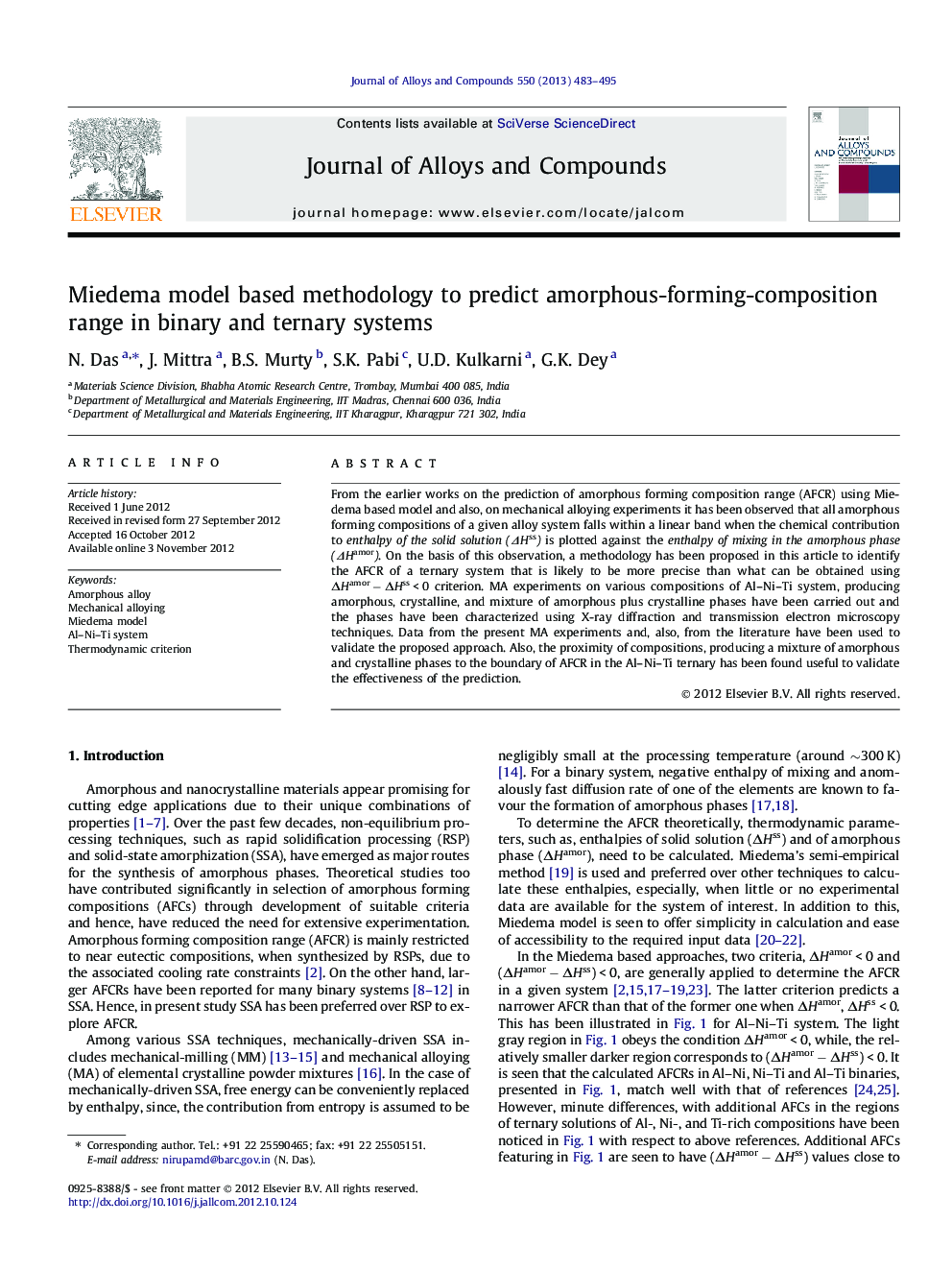| کد مقاله | کد نشریه | سال انتشار | مقاله انگلیسی | نسخه تمام متن |
|---|---|---|---|---|
| 1615117 | 1516343 | 2013 | 13 صفحه PDF | دانلود رایگان |

From the earlier works on the prediction of amorphous forming composition range (AFCR) using Miedema based model and also, on mechanical alloying experiments it has been observed that all amorphous forming compositions of a given alloy system falls within a linear band when the chemical contribution to enthalpy of the solid solution (ΔHss) is plotted against the enthalpy of mixing in the amorphous phase (ΔHamor). On the basis of this observation, a methodology has been proposed in this article to identify the AFCR of a ternary system that is likely to be more precise than what can be obtained using ΔHamor − ΔHss < 0 criterion. MA experiments on various compositions of Al–Ni–Ti system, producing amorphous, crystalline, and mixture of amorphous plus crystalline phases have been carried out and the phases have been characterized using X-ray diffraction and transmission electron microscopy techniques. Data from the present MA experiments and, also, from the literature have been used to validate the proposed approach. Also, the proximity of compositions, producing a mixture of amorphous and crystalline phases to the boundary of AFCR in the Al–Ni–Ti ternary has been found useful to validate the effectiveness of the prediction.
► A methodology was proposed to predict amorphous forming compositions (AFCs).
► Chemical contribution to enthalpy of mixing ∝ enthalpy of amorphous for AFCs.
► Accuracy in the prediction of AFC-range was noticed in Al–Ni–Ti system.
► Mechanical alloying (MA) results of Al–Ni–Ti followed the predicted AFC-range.
► Earlier MA results of Al–Ni–Ti also conformed to the predicted AFC-range.
Journal: Journal of Alloys and Compounds - Volume 550, 15 February 2013, Pages 483–495